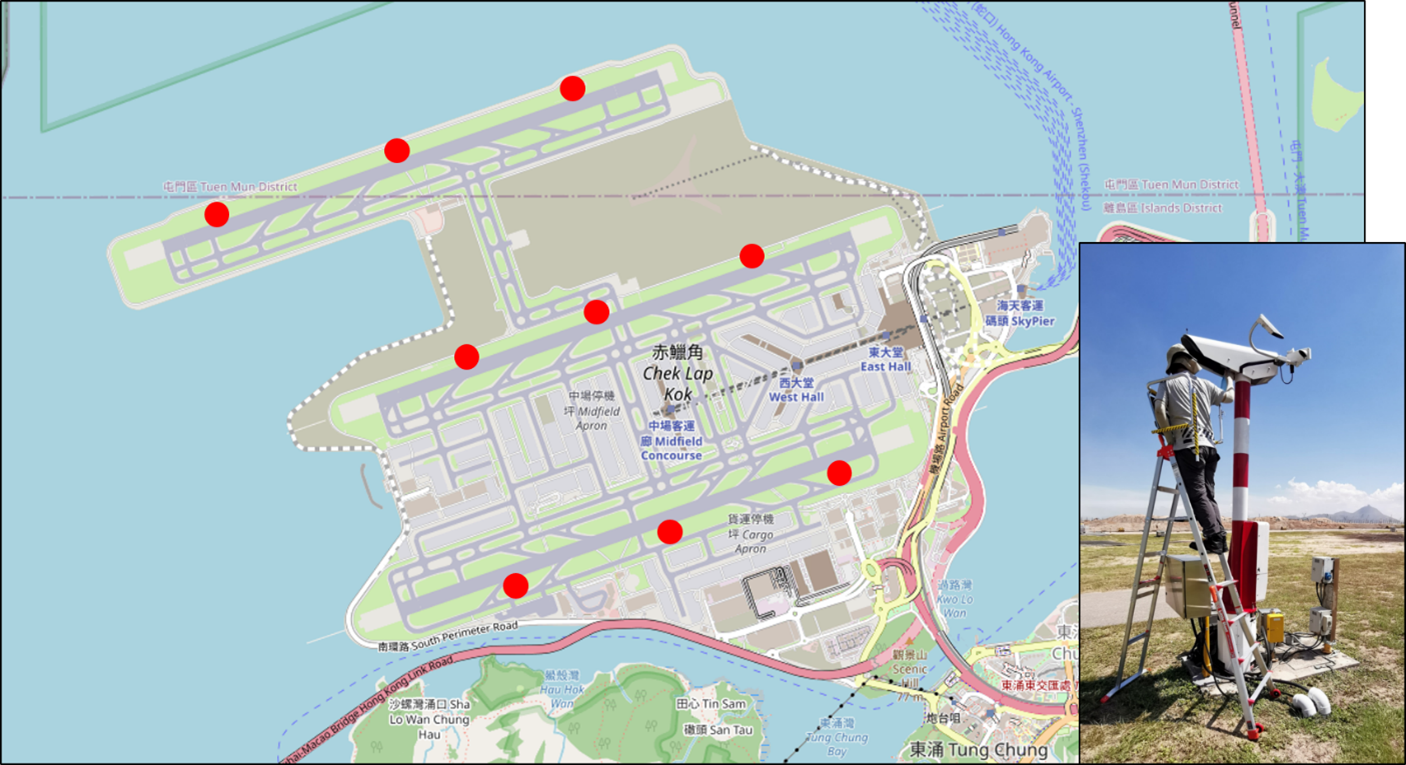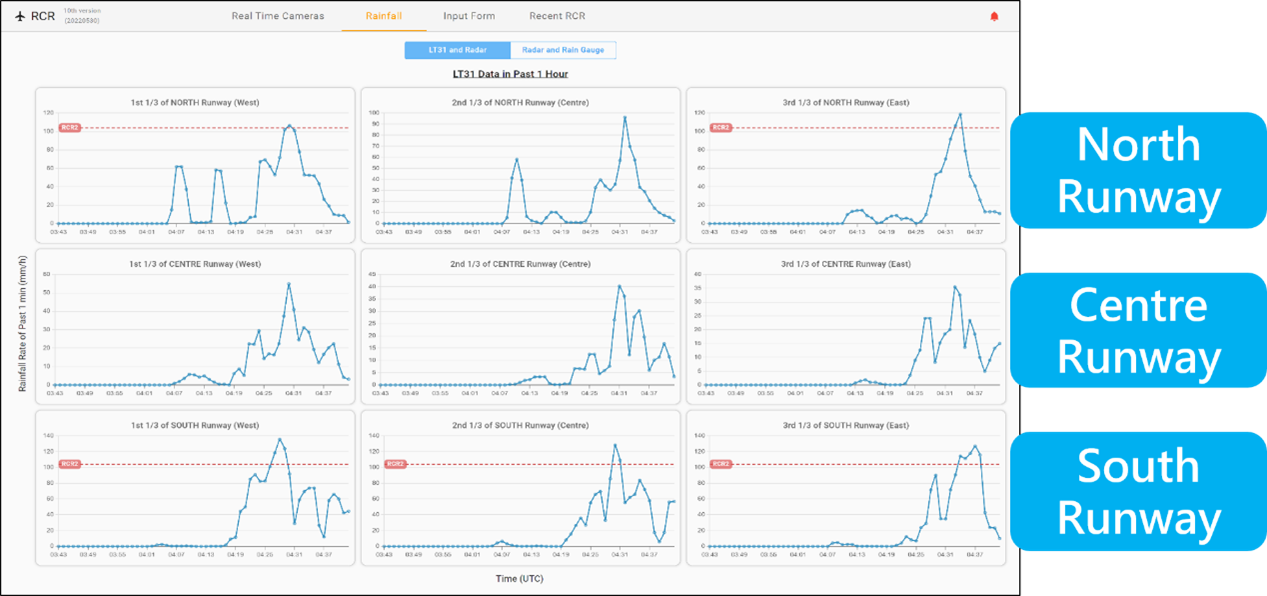Caution! Slippery Road!
Caution! Slippery Road!
FAN Man-hei
January 2023
The International Civil Aviation Organization (ICAO) has mandated the requirement for worldwide airports to provide real-time Runway Condition Report (RCR) to pilots from November 2021 onwards, so as to alert pilots of possible dangerous runway conditions when aircraft are landing at high speeds. For example, whether the runway is wet and slippery, having standing water or icing conditions. Pilots may, therefore, get ready to take necessary actions, such as applying the reverse thrust to stop the aircraft safely. Air Traffic Controllers from the Civil Aviation Department (CAD) may also apply a farther separation between aircraft in the air.
At the invitation of the Airport Authority Hong Kong (AAHK), the Hong Kong Observatory (HKO) has designed an automatic system to monitor the rainfall condition over the Hong Kong International Airport and deduce the standing water depths on runway surfaces under heavy rain round the clock. With the use of nine visibility meters installed at both ends and at the middle of each of the three runways (Figure 1), real-time rainfall rates are measured and converted to standing water depths on runways, as well as the percentage of runway surface covered by water. RCRs are then provided to AAHK on whether the runway is “Dry”, “Wet” or having a “Standing Water” depth of more than 3 mm.
Abrupt heavy rain often occurs in the summer of Hong Kong. If the cumulonimbus is small in spatial scale, the associated heavy rain is often localised and only lasted for a very short time (as seen in Figure 2). If the RCR is issued upon instantaneous rainfall figures, the report may easily jump from one category to another in a few minutes, causing nuisance to Air Traffic Controllers and pilots in grasping the actual situation. The RCR system incorporates the SWIRLS nowcasting system of HKO in determining whether the heavy rain will persist based on the predicted rainfall amount at the airport in the coming 15-20 minutes. Upon confirmation by AAHK personnel, the information will be passed to the Air Traffic Controllers of CAD for broadcast to pilots.
With international travel restrictions easing progressively, the airport is becoming increasingly busy. When you bump into a heavy rain at the airport next time, you may remember that the Observatory and airport personnel are working hard to uphold aviation safety by closely monitoring and responding to the slippery runways.

Figure 1 The red dots show the location of the 9 rainfall monitoring instruments in the RCR system. The figure to the right shows the appearance of the instrument.

Figure 2 The RCR webpage designed for AAHK shows the real-time rainfall on 6 June 2022. Four out of nine stations recorded rainfall rate over 104 mm/hour (the red dotted line), indicating standing water on that segments of runways is possible. It is also noted that the heavy rain only lasted for 1 to 5 minutes at the airport.